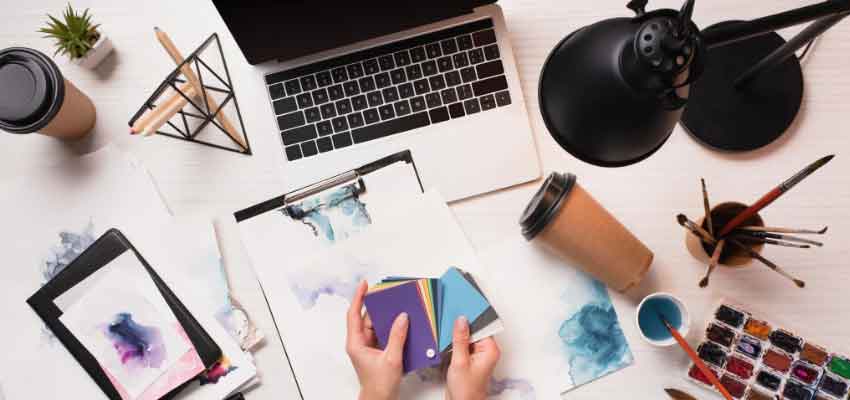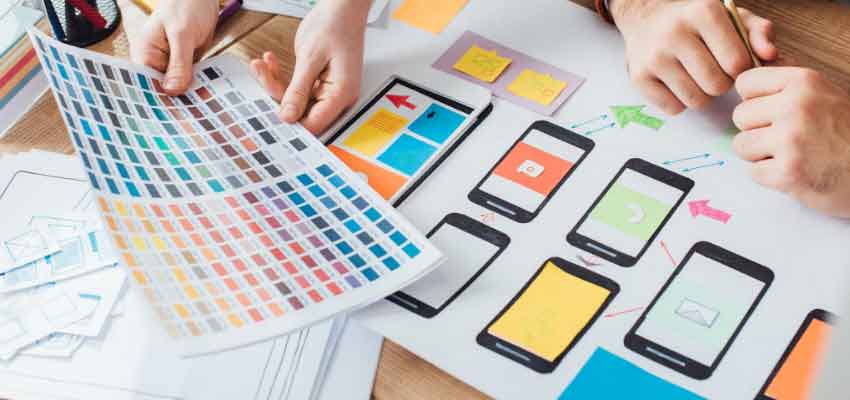Show:
7 Essential Items Every Designer Needs In Their Toolbox
Art is in everything in the world, from the theme parks to billboards, buildings, music, movies, even the food served at restaurants. Design, on the other hand, is in everything that pertains to visual representation. Both are essential tools that artists need to create and produce beautiful outputs.
Technology has dominated a number of our world’s industries, and the art industry is no different. Newly developed gadgets, methods, and techniques paved the way for graphic design to bloom in the 21st century. Artists went from traditional pens, brushes, pencils, and erasers to a stylus pen and drawing tablet.

As of today, a great deal of society revolves around design. Industries such as fashion, food, marketing, and multimedia have become highly dependent on designers to market, create, or style their products. In short, there is a growing list of demands and expectations for this generation’s set of artists and graphic designers.
Fortunately, designers can use many tools and equipment to help them cope and meet client standards. Here is a list of necessary essential items that every designer must-have.
1. Traditional Art Materials
You must be thinking, why use traditional materials such as coloring pens, pencils, brushes, and erases if there already are technological adaptations for them? As a designer, you want to have at least a pen and paper with you as you never know when inspiration might hit. Additionally, you will get tired of looking at screens for seven days a week.
The power of traditional art materials should never be underestimated. At least invest in a good quality pencil, pen, eraser, and paper so that you can sketch initial concepts and ideas. This will also help you enhance your focus, creativity, and adaptability. Hone your skills in graphic design but do not forget the traditional methods.
2. Laptop or Computer
When you blurt out words such as graphics, technology, and the likes, of course, you cannot refrain from thinking about computers, smartphones, and laptops. As a digital creative, you need a powerful core device that can perform elegantly and efficiently. Choose between a Mac or Android device.
Suppose you are unsure in choosing between a laptop or computer. In that case, you can always consider factors such as tech specifications, convenience, and overall durability, as mentioned by The Designest, having a device that can cope with your tasks and deadlines. If you do most of your work at home, opting for a desktop computer might be enough for you.
3. Drawing or Graphic Tablet
What digital artist goes around without their drawing tablet? Kidding aside–if you do not yet have your stylus and tablet, you might want to consider looking for one now. Once you get the hang of it, you will find that it will make your life as a digital creative so much easier.

These tools are designed to mimic the purpose of a paper and pen. There are many brands of graphic tablets and stylus pens that you can choose from for a standard artist. However, most artists recommend an iPad paired with its own Apple Pencil if you want to go for some high-end tools. Either way, both of them can capture your strokes just fine.
You can look for a graphic tablet with a screen display and work as if you are drawing on an iPad. Standard drawing tablets do not have a screen, but you can connect them to your laptop or computer and watch as your strokes are transformed into beautiful works of art on your computer screen.
Make sure to invest in a high-quality tablet case for your drawing or graphic tablet to keep it safe from dust, dirt, and scratches. Luckily, you can find a variety of protective tablet cases designed in various shapes and sizes to fit any type of tablet. You can also consider purchasing a pen holder so you don’t misplace the stylus when not in use.
4. Graphic Design Applications
No artist is complete without the correct software and applications. This is a crucial tool for every designer as it dictates how you can create, edit, save, and export your works. Every software has different tools, brushes, and services. You must find an application that works well with your line of work.
Whether you are a layout designer or an illustrator, choose software specializing in your field of work. For instance, some software does not work well for illustrators but is a brilliant layout designer tool. Examine your options and try experimenting with paid and free applications. Paid applications always provide more services and better management.
5. Storage
Some artists can afford the latest computers with 32-GB memory, lightning speed processors, and the likes. High-end computers often come with ample storage spaces. Storage is a must-have to store those applications, vector designs, and a wide range of projects.
Save multiple projects, pre-made elements, digital fonts, swatches, and personal artworks in your device with sizable local storage. You can also invest in iCloud storage or something similar so that you can sync your work to other devices. Work on your laptop, smartphone, or someone else’s computer by storing necessary files on your iCloud storage space.
6. Color Palette Reference
While we were taught in preschool that red, blue, and yellow are colors that we can all use, as an artist, you have to examine thousands of hues, tints, and shades that can perfectly bring your piece together. You mustn’t settle for counterfeit colors. Details such as color accuracy and rendering precision are crucial for design professionals.

Try out the Pantone Matching System and invest in the Formula Guide. You need to have a particular set of colors for each project, as color plays a vital role in the world of graphic design. When it comes to marketing, colors are linked to psychological effects, so consider incorporating them into your design.
7. Portfolio
A portfolio is another artist’s must-have. This is crucial to attracting new clients and opening yourself to better job opportunities. Do not think of it as arrogantly showing your pieces. Instead, think of it as a resume that you need to attract employers. Pick your best works and share them with the world through a public platform such as an Adobe Portfolio, Wix, or SquareSpace.
If you are new to graphic design and are just exploring the world of digital art, here are some of the tools that you might want to have. These are essential in building your career and profile as a designer, so it is best to take them seriously. Invest in high-quality products and software to help make your life as a designer easier.

 Return to Previous Page
Return to Previous Page







